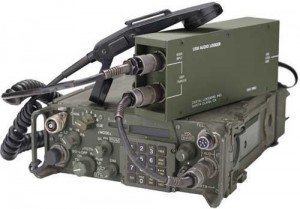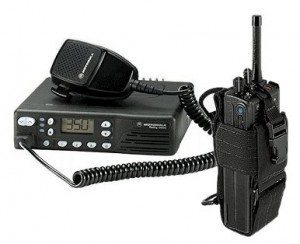When it comes to the idea of interoperability there is a shared way of thinking that goes through the mind of every person who is an emergency medical responder, law enforcement officer or military member. Each one knows how important it is to have connectivity when communicating in order to carry out a mission so that no one loses a single life. But people die because of interoperability issues. War and casualties is never and easy thing to discuss among the serious minded. Fratricide because of interoperability is tragic and something that occurs because of so many issues: poor training, outdated doctrines, and no universal system in place for prevention of friendly fire deaths. Does leadership care? To lump everyone together would be unfair. But how do we fix the issue?
Interoperability. What is it? The official definition by the United States DoD:
- The ability to operate in synergy in the execution of assigned tasks. 2. The condition achieved among communications-electronics systems of items of communications-electronics systems or items of communications-electronics equipment when information or services can be exchanges directly and satisfactorily between then and/or their users. The degree of interoperability should be defined when referring to specific cases.
In the case of emergency medical personnel responding to save lives, none of them should want to lose a life, as that would be unthinkable. Many responders know that more could be done to save lives, but communication failures aren’t usually fixed, until someone actually dies and a complaint is made; how often do complaints falls on deaf ears? The preventable death of a person who could have been rescued may haunt a primary rescuer for a very long time.
On April 16 2014 en route from Incheon to Jeju South Korea, a Japanese-built South Korean ferry capsized while carrying 476 people. Of the approximately 172 survivors, many were rescued by fishing boats and other commercial vessels that arrived at the scene approximately 30 minutes before any South Korean coast guard or ROK Navy ships arrived. 476 passengers died and the Korean government was blamed for the slow response time; a lack of clear communication was cited as one of the factors that delayed a good response. The crew didn’t investigate what had happened, the passengers were not clearly informed of the situation by the ship’s crew, and the first responders were never informed by the government if the issue was severe or minor. Now, let’s tie in another problem: interoperability. Wouldn’t this issue of interoperable systems be the perfect storm for complicating matters even more? Let’s add in troops, jets, helicopters and lots of loud noises and bright flashes of light. How about now?
No nation is without its response issues and our United States services suffer from communication problems as well. Specifically, there is an inability of first-responders to communicate on a common platform. The list of issues are plentiful; communications systems may be online and operable but not plentiful or available in every first response vehicle used by a responding agency. A second problem is some communication systems are not fully operational during normal business hours due to budget cuts. A third problem is there are different platforms; the Federal Bureau of Investigations is an example of an important agency with an incompatible system to local and state systems. There are reasons for this, but it does complicate matters. A fourth problem is network failure; if a portion of a network fails then the entire system doesn’t work due to reliance on the sole system.
A solution is having alternatives in the redundancy systems of cell phone services, electricity, and land lines. Lastly, the appropriate training, coordination, and planning to establish parameters for usage is lacking. Costs may be difficult to define and so is defining what sorts of interoperability are worth what sorts of costs. So now what?
Interoperability is the issue for states and local governments looking at their organizational issues and technology matters that prevent communications cohesion. Small scale and large scale operations require interoperability, this need to communicate and exchange information across jurisdictions and disciplines, on demand. An increase in the usage of technology, the necessity for having it, and the demand for it goes along with the inability of government to provide money to obtain it. One of the most pressing issues is deciding what kind of technology to use because once a system is in place, it becomes costly to update it, and many systems become antiquated; how should governments spend their limited resources best?
September 11th, 2001 will always be a date that emergency responders can point to as an event that had many communication failures and successes for emergency responders. One of the issues where communication was ineffective and unclear was responding units had to climb high into the World Trade Center Towers. As they climbed higher, their ability to ‘talk’ with their command became limited. Fire chiefs on the tactical radio channels found communication was sporadic as well because the effectiveness of the radios was limited in building high-rises. Another issue was the tactical radio channels were in use at the same time by too many units and this caused an overload. No matter what they tried to do there were problems, frustration, confusion and mistaken decision making then likely occurred.
The Homeland Security Commission noted in their study, “Within minutes of impact, Port Authority police officers from the PATH, bridges, tunnels and airport commands began responding to the WTC. The PAPD lacked written standard operating procedures for personnel responding from outside commands to the WTC during a major incident. In addition, officers from some PAPD commands lacked interoperable radio frequencies. As a result, there was no comprehensive coordination of PAPD’s overall response. An investigation into the failures showed that radios of the type used by most of the responding fire department and police had receivers that could be overloaded. When the overloading occurs, only the strong signals get through and weak signals disappear, and nothing is received. The ruling of the public safety agencies, like fire and police, demanded that responders operate on a narrowly banded frequency to tighten communication efficiency.
One example of where communication was clear and effective was under the command of the news station WCBS-TV. Most major news networks want the best communication systems and this often means establishing antennae’s or transmitters on the tallest buildings; in the case of many news stations their equipment was on the World Trade Center buildings. WCBS-TV management had decided early on in their business decisions to move their transmitter to the Empire State Building. Whether this was good decision making or chance didn’t matter because it was fortuitous for them. When the WTC buildings fell, the news information being sent to the public from the major news networks ended. WCBS-TV stayed on the air throughout the September 11th, 2001 attack. WCBS-TV decided to have a back-up transmitter, fully-powered and located elsewhere. Their leadership decided to make every effort to lend transmission time to other stations until alternative methods of communication were available; in this way emergency responders were able to broadcast emergency information to the public via on ground reporters ‘tailing’ emergency responders. When the radio systems failed and when other news networks failed the public and local agencies worked together to cobble a talking system that could generate clear and effective information for public consumption.
My buddy who works the federal side was working with SWAT on the municipal side. Leadership had planned a sizable active-shooter event. No one thought to mention that each police force had incompatible radio systems; needless to say the event didn’t go as planned; one side couldn’t talk to another side during the OP4. Let’s not even begin to get into the subject matter of fratricide, particularly with the military.
Who is going to take the lead when it comes to fratricide prevention? One of the big issues today is technology is outpacing the ability of personnel to keep up with testing, training and maintaining their equipment while engaging their personnel. There are many problems to fix. One of the simplest when it comes to interoperable systems is for leaders to allow exercises to ensure communications systems and personnel are able to function at the optimum level. Hopefully your leadership cares more about getting these issues fixed than they do about a raise, promotion or new title. Let’s hope you get what you need to do your job right. If not, then people can die. That’s a big period. Know and check your systems and be able to understand how it works.



